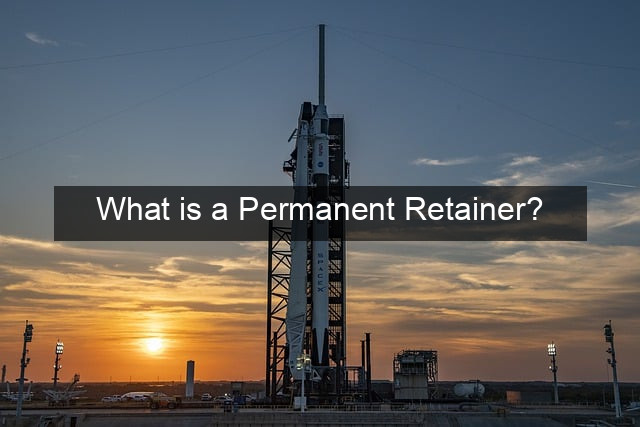What is a Permanent Retainer?
- What is a Permanent Retainer?
- What is a Permanent Retainer? Your Guide to a Straighter Smile
- Understanding Permanent Retainers
- What Exactly Are They?
- Who Are They For?
- Benefits of Permanent Retention
- Potential Drawbacks and Considerations
- Oral Hygiene Challenges
- Potential Damage and Repair
- Speech Adjustments
- Cost of Permanent Retainers
- Conclusion: Maintaining Your Perfect Smile
- Frequently Asked Questions about Permanent Retainers
- How long do permanent retainers last?
- Can I get a permanent retainer after Invisalign?
- Do permanent retainers hurt?
- Can I remove a permanent retainer myself?

What is a Permanent Retainer? Your Guide to a Straighter Smile
A picture-perfect smile is often the result of orthodontic treatment. But maintaining that stunning transformation requires more than just a celebratory photo. Enter the permanent retainer, a discreet orthodontic appliance custom-designed to keep your teeth in their perfectly aligned positions after braces or clear aligners come off. Unlike removable retainers, these small wires are bonded to the back of your teeth, offering a virtually invisible and hassle-free solution for long-term stability. This comprehensive guide dives deep into the world of permanent retainers, exploring their benefits, potential drawbacks, cost considerations, and everything else you need to know to make an informed decision about your post-orthodontic care.
Understanding Permanent Retainers
What Exactly Are They?
Permanent retainers, also known as fixed or bonded retainers, are thin wires typically made of stainless steel or a flexible, tooth-colored material. These wires are carefully bonded to the lingual (tongue-side) surface of your teeth, usually the lower six front teeth, and sometimes the upper teeth as well. This strategic placement prevents teeth from shifting back to their original positions after active orthodontic treatment is complete. Because they are cemented in place, they work 24/7 to maintain your beautifully aligned smile.
The bonding process involves etching the tooth surface, applying a dental adhesive, and then carefully attaching the pre-shaped wire. This procedure is generally quick and painless, often completed immediately after your braces are removed or your final set of aligners is worn. The permanent retainer becomes an integral part of your dental landscape, working tirelessly behind the scenes to preserve the results of your orthodontic investment.
While most commonly used on the lower front teeth, where shifting is most likely to occur, upper permanent retainers are also an option depending on your individual case. Your orthodontist will assess your specific needs and recommend the most suitable placement to ensure optimal long-term stability.
Who Are They For?
Permanent retainers are an excellent option for individuals who have completed orthodontic treatment and are at a higher risk of relapse. This includes those who experienced significant crowding or spacing issues, rotations, or severe bite misalignments. They are also particularly beneficial for patients who may not be diligent with wearing removable retainers as prescribed.
Your orthodontist will evaluate your specific case and discuss whether a permanent retainer is the right choice for you. Factors considered include the extent of your previous orthodontic correction, your bite stability, and your personal preferences regarding retainer wear.
While highly effective, permanent retainers are not suitable for everyone. Patients with certain dental conditions, such as gum disease or those prone to excessive plaque buildup, may not be ideal candidates. Your orthodontist will thoroughly assess your oral health to determine if a permanent retainer is a viable option.
Benefits of Permanent Retention
The primary advantage of permanent retainers is their ability to provide continuous, passive tooth retention. This eliminates the need to remember to wear a removable retainer, ensuring consistent and predictable results. This “set-it-and-forget-it” approach offers unparalleled convenience and peace of mind.
Another significant benefit is their discreet nature. Bonded behind the teeth, permanent retainers are virtually invisible, making them an ideal choice for individuals who are self-conscious about wearing traditional retainers.
Finally, permanent retainers can be highly effective in preventing minor tooth movements that can occur over time, even after orthodontic treatment is complete. This helps to maintain a stable and beautiful smile for years to come.
Potential Drawbacks and Considerations
Oral Hygiene Challenges
While permanent retainers offer numerous benefits, they can present some challenges with oral hygiene. The wire can make it slightly more difficult to floss and brush effectively around the bonded teeth. Diligent and meticulous cleaning is crucial to prevent plaque buildup and potential gum inflammation.
Your orthodontist will provide specific instructions on how to clean around your permanent retainer. Specialized flossing techniques and interdental brushes may be recommended to ensure thorough cleaning and maintain optimal oral health.
Regular dental checkups are essential for individuals with permanent retainers. Your dentist can monitor the health of your gums and teeth, and address any potential issues related to the retainer.
Potential Damage and Repair
While generally durable, permanent retainers can sometimes become loose or break, especially if exposed to hard or sticky foods. Biting into hard candies, chewing ice, or eating sticky caramels can put stress on the wire, potentially causing damage.
If your permanent retainer becomes loose or breaks, it’s essential to contact your orthodontist immediately. Ignoring the problem can lead to tooth movement and compromise the results of your orthodontic treatment.
Repairing a permanent retainer typically involves rebonding the loose wire or replacing it altogether. Your orthodontist will assess the damage and recommend the appropriate course of action.
Speech Adjustments
Some individuals may experience minor speech changes immediately after getting a permanent retainer. The presence of the wire behind the teeth can temporarily affect tongue placement and pronunciation, particularly for sounds like “s” and “th.”
These speech adjustments are usually temporary and resolve within a few days or weeks as the tongue adapts to the presence of the retainer. Practicing speaking and reading aloud can help expedite the adaptation process.
If speech difficulties persist beyond a reasonable timeframe, it’s essential to consult with your orthodontist. They can assess the situation and offer guidance or adjustments as needed.
Cost of Permanent Retainers
The cost of permanent retainers varies depending on several factors, including the material used (stainless steel vs. tooth-colored), the number of teeth being retained, and the orthodontist’s fees.
Often, the cost of permanent retainers is included in the overall cost of orthodontic treatment. However, if placed later or if a repair is needed, there will be a separate charge.
It’s essential to discuss the cost of permanent retainers with your orthodontist during your initial consultation. They can provide a detailed breakdown of the expenses involved and discuss any potential insurance coverage.
Conclusion: Maintaining Your Perfect Smile
Permanent retainers provide a valuable solution for maintaining the results of orthodontic treatment. Their convenience, discreet nature, and effectiveness make them a popular choice for many individuals. However, it’s essential to weigh the potential drawbacks, including oral hygiene challenges and the possibility of damage, before making a decision.
By understanding the benefits, limitations, and cost considerations associated with permanent retainers, you can make an informed choice about your long-term orthodontic care. Consulting with your orthodontist is crucial to determine if this option is right for you and to ensure the continued success of your beautifully aligned smile.
Frequently Asked Questions about Permanent Retainers
How long do permanent retainers last?
With proper care and regular dental checkups, permanent retainers can last for many years, even decades. However, they may eventually need to be replaced due to wear and tear or damage.
Can I get a permanent retainer after Invisalign?
Yes, permanent retainers can be placed after treatment with Invisalign or other clear aligner systems, just as they are after traditional braces.
Do permanent retainers hurt?
The placement of a permanent retainer is generally painless. You may experience some minor discomfort or pressure immediately after the procedure, but this typically subsides quickly.
Can I remove a permanent retainer myself?
No, attempting to remove a permanent retainer yourself can damage your teeth and the retainer. Removal should always be performed by a qualified orthodontist.
| Retainer Type | Pros | Cons |
|---|---|---|
| Permanent Retainer | Convenience, Discreet, Effective | Oral Hygiene Challenges, Potential Damage |
| Removable Retainer | Easy to Clean, Removable | Requires Diligence, Can be Lost |




